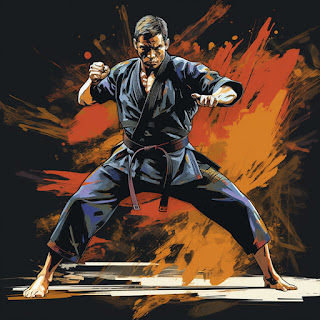Youth Self-Defense
Youth Self-Defense
When you're teaching young people about self-defense, you'll need to balance physical techniques with mental preparation. While basic strikes and blocks form the foundation, it's the development of confidence and awareness that truly empowers youth to stay safe. From recognizing potential threats to maintaining proper defensive stances, each element builds upon the next. Yet there's much more to consider when preparing children for real-world situations.
Essential Techniques for Building Confidence and Safety
When it comes to youth self-defense, mastering fundamental techniques creates a foundation for both physical and mental strength.
You'll want to start by teaching proper stance, which ensures stability and readiness to respond.
Focus on basic blocking moves that protect vital areas and simple strikes that don't require excessive force or complexity.
Make sure you emphasize situational awareness as a crucial preventive measure.
Teach young people to scan their surroundings, identify potential threats, and trust their instincts.
Practice verbal de-escalation strategies that can help avoid physical confrontations altogether.
Include boundary-setting exercises that build confidence in saying "no" and creating safe distance from threats.
Remember to incorporate regular drills that combine these elements, allowing muscle memory to develop naturally.
Creating Awareness Through Mental Preparedness
Mental preparedness forms the backbone of effective self-defense for young people.
You'll need to cultivate a heightened sense of your surroundings and trust your instincts when something doesn't feel right.
Practice scanning your environment regularly, identifying potential escape routes, and staying alert to unusual behavior.
You can strengthen your mental readiness by developing a confident mindset and rehearsing your responses to various scenarios.
Make it a habit to walk with purpose, maintain healthy boundaries, and recognize early warning signs of conflict.
Keep your phone charged and accessible, but don't let it distract you from staying aware of your environment.
The Role of Parents and Instructors in Youth Safety Training
Parents and instructors play a vital role in developing young people's self-defense skills and safety awareness.
You'll need to create a supportive environment where children feel comfortable discussing their concerns and learning new safety techniques.
Focus on building their confidence while teaching practical skills they can use in real-world situations.
Your guidance should emphasize prevention strategies, helping youth identify potential threats and trust their instincts.
Make sure to teach age-appropriate techniques and regularly practice scenarios that reinforce these skills.
You'll want to maintain open communication, encouraging questions and feedback throughout their learning journey.
Remember to stay current with the latest safety protocols and teaching methods, adapting your approach as children grow and face new challenges in today's changing world.
Conclusion
Like a shield that grows stronger with each layer, you'll build confidence through self-defense training. Your awareness will bloom like a radar, scanning your surroundings while your mind stays sharp as a sentinel. With dedicated instructors and supportive parents lighting your path, you're crafting invaluable life skills. These techniques aren't just moves - they're stepping stones to becoming your own strongest protector.




Comments
Post a Comment